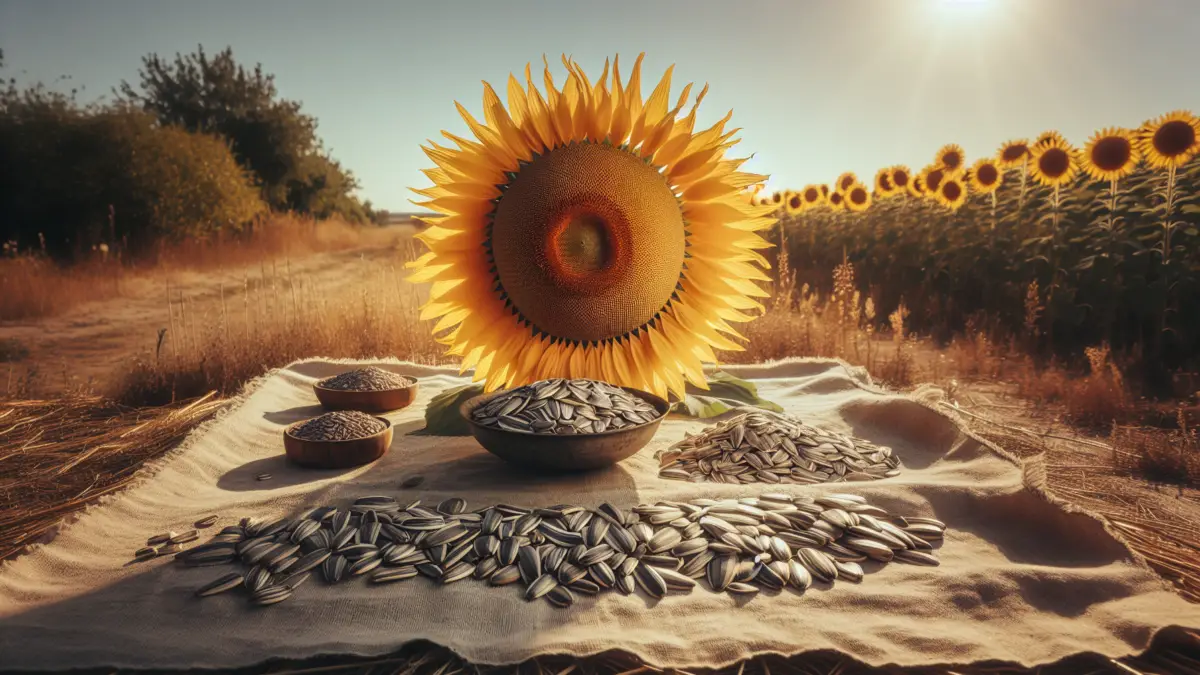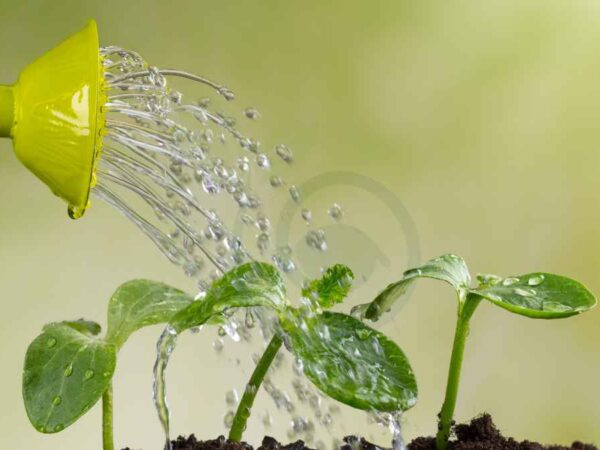Harvesting Sunflower Seeds
Sunflower Seed Harvesting Process
Harvesting sunflower seeds requires a clear understanding of the steps involved to ensure optimal seed quality. Here’s a detailed process for collecting these seeds:
- Drying the Flower Head: Let the sunflower head dry on or off the stem until the back of the head turns brown. This indicates that the seeds are mature and ready for harvesting.
- Removing the Seeds: Place the dried sunflower head on a flat, clean surface. Gently rub your hand over the seeded area to dislodge the seeds. The seeds should come off easily if they are fully matured.
- Cleaning the Seeds: Transfer the seeds to a colander and rinse them under cold, running water to remove dirt and bacteria. This step is crucial to ensure the seeds are clean before drying and storage.
- Drying the Seeds: After cleaning, spread the seeds on a towel and let them dry for a few hours. This initial drying phase is important to remove surface moisture before further processing or storage.
Timing for Sunflower Seed Harvest
Knowing when to harvest sunflower seeds is key to obtaining high-quality seeds. Several indicators and optimal conditions can guide you:
- Foliage and Flower Head Color: Sunflowers are ready to harvest when their foliage turns yellow and the back of the flowerhead turns brown (Kellogg Garden Products).
- Seed Readiness: The seeds should be plump and somewhat loose. Observing when birds start to eat the seeds can also indicate that they are ripe for harvesting.
- Optimal Harvest Time: The best time to harvest is when about 70-80% of the heads are yellow-brown and the seeds are about 12% moist. Harvesting too early can result in poor seed quality, while harvesting too late can lead to seed loss due to shattering (Sunfloromash).
| Indicator | Description |
|---|---|
| Foliage Color | Yellowing foliage and backs of flowerheads turning brown |
| Seed Appearance | Plump and somewhat loose seeds |
| Bird Activity | Birds eating seeds signals readiness |
| Optimal Moisture Content | Seeds at 12% moisture for ideal harvest |
By following these guidelines, you can successfully harvest sunflower seeds, ensuring they are clean and ready for drying and storage.
Drying Sunflower Seeds
Drying sunflower seeds is a crucial step in the harvesting process. Proper drying ensures that the seeds are safe for storage and maintain their quality. This section delves into the importance of drying and various methods to achieve the best results.
Importance of Drying Seeds
Drying sunflower seeds to the correct moisture content is essential for several reasons. Seeds should be dried to a moisture content of 8-10% for safe storage and to prevent mold growth (Nuseed). Proper drying is vital for maintaining the quality and longevity of the seeds. Here's why drying is so important:
- Prevents Mold and Mildew: High moisture levels can lead to the growth of mold and mildew, which can spoil the seeds.
- Ensures Safe Storage: Dry seeds are less prone to spoilage and can be stored for longer periods.
- Maintains Nutritional Quality: Properly dried seeds retain their nutritional value and flavor.
Methods for Drying Seeds
There are several methods to dry sunflower seeds effectively. Choosing the right method depends on your resources and the quantity of seeds you need to dry.
Air Drying
Air drying is a simple and effective method for drying sunflower seeds. Here's how to do it:
- Spread Seeds on a Screen: Lay the seeds out on a screen in a single layer to ensure good airflow.
- Choose a Warm Place: Place the screen in a warm, dry area with good ventilation.
- Use Fans: Using fans can help speed up the drying process and prevent mold growth.
| Drying Method | Duration | Tools Needed | Ideal Conditions |
|---|---|---|---|
| Air Drying | At least 1 week | Screen, fans | Warm, dry place with airflow |
(Source: Fruition Seeds)
Oven Drying
Oven drying is another method, especially useful when the weather is not conducive to air drying. Follow these steps:
- Preheat Oven: Set the oven to the lowest possible temperature.
- Spread Seeds on a Baking Sheet: Place the seeds in a single layer on a baking sheet.
- Dry Seeds: Place the baking sheet in the oven, leaving the door slightly open to allow moisture to escape. Stir the seeds occasionally to ensure even drying.
- Monitor Temperature: Keep an eye on the seeds to prevent scorching.
| Drying Method | Duration | Tools Needed | Ideal Conditions |
|---|---|---|---|
| Oven Drying | 3-4 hours | Oven, baking sheet | Low temperature, oven door slightly open |
Dehydrator Drying
Using a food dehydrator is another efficient method for drying sunflower seeds. Here's how:
- Arrange Seeds: Place the seeds in a single layer on the dehydrator trays.
- Set Temperature: Set the dehydrator to a low temperature (around 100-110°F).
- Dry Seeds: Allow the seeds to dry for several hours, checking periodically for dryness.
| Drying Method | Duration | Tools Needed | Ideal Conditions |
|---|---|---|---|
| Dehydrator Drying | 4-6 hours | Food dehydrator | Low temperature (100-110°F) |
Drying sunflower seeds properly is a key step in the harvesting process, ensuring that the seeds remain safe for storage and retain their quality. Select the method that best suits your needs and resources to achieve optimal results.
Preserving Sunflower Seeds
Preserving sunflower seeds is essential for maintaining their quality and ensuring they remain safe for consumption or planting. In this section, I'll cover the best practices for storing and freezing sunflower seeds.
Storing Sunflower Seeds
Once sunflower seeds are properly dried to a moisture content of 8-10% (Nuseed), they can be stored safely. Proper drying is crucial to prevent mold growth and maintain the seeds' quality.
To store sunflower seeds effectively:
- Clean the Seeds: Remove any debris, plant material, or damaged seeds.
- Choose the Right Container: Use airtight containers like glass jars, plastic containers, or vacuum-sealed bags.
- Store in a Cool, Dry Place: Keep the containers in a cool, dry, and dark place to prevent moisture buildup and exposure to light, which can degrade the seeds.
| Storage Method | Duration | Conditions |
|---|---|---|
| Airtight Container | 6-12 months | Cool, dry, dark |
Freezing Sunflower Seeds
Freezing sunflower seeds is an effective method to preserve their quality and prevent damage from pests like sunflower weevils. According to Fruition Seeds, freezing sunflower seeds after cleaning and drying them ensures low moisture content and kills any weevils present.
Steps to freeze sunflower seeds:
- Clean and Dry the Seeds: Ensure seeds are thoroughly cleaned and dried.
- Use Desiccant Packets: Place desiccant packets in the containers to absorb any residual moisture.
- Seal in Plastic Bags: Use resealable plastic bags to store the seeds.
- Freeze for 3 Days: Place the bags in the freezer for at least 3 days to ensure all pests are eliminated.
| Freezing Method | Duration | Conditions |
|---|---|---|
| Plastic Bag + Desiccant | 3 days | Freezer (-18°C/0°F) |
By following these steps, you can effectively preserve your sunflower seeds, ensuring they remain viable for future use. Proper storage and freezing techniques are crucial for maintaining the quality and longevity of your sunflower seeds.
Protecting Sunflower Seeds
Ensuring the protection of sunflower seeds is crucial to preserving their quality and viability. There are several challenges to be aware of, including animal predation and insect pests like weevils.
Preventing Animal Predation
Animals such as chipmunks, mice, and squirrels are often attracted to drying sunflower seeds. To prevent these animals from damaging or eating the seeds, it is recommended to lay another screen on top of the seeds. This method allows for proper airflow while keeping the seeds protected from animals (Fruition Seeds).
| Animal | Prevention Method |
|---|---|
| Chipmunks | Use a screen cover |
| Mice | Use a screen cover |
| Squirrels | Use a screen cover |
Guarding Against Weevils
Sunflower weevils can cause significant damage to sunflower seeds if not properly managed. To protect the seeds from weevil infestation, it is essential to freeze them after cleaning and drying. Freezing the seeds with desiccant packets in a plastic bag for three days will ensure low moisture content and eliminate weevils (Fruition Seeds).
| Step | Description |
|---|---|
| Cleaning | Remove debris and dirt from the seeds |
| Drying | Ensure seeds are completely dry |
| Freezing | Place seeds in a plastic bag with desiccant packets and freeze for 3 days |
By following these methods, you can effectively protect your sunflower seeds from various threats and ensure they remain in excellent condition for future use.
Seed Varieties and Cross-Pollination
Exploring the diverse world of sunflower seed varieties and understanding the dynamics of cross-pollination can greatly enhance your gardening experience.
Maximizing Seed Varieties
When it comes to maximizing the variety of sunflower seeds, growing multiple types can be highly rewarding. Different sunflower varieties offer unique characteristics such as varying heights, flower sizes, and colors. By planting a mix, you can enjoy a vibrant and diverse sunflower garden.
Here are some popular sunflower varieties for home gardeners:
| Variety | Characteristics |
|---|---|
| Mammoth | Large heads, ideal for seed harvesting |
| Autumn Beauty | Multicolored petals, ornamental |
| Velvet Queen | Deep red petals, striking appearance |
| Sunrich | Uniform growth, excellent for cutting |
By cultivating a range of sunflower varieties, you can create a visually appealing garden while also experimenting with different seed traits. This can be particularly exciting for seed savers looking to develop unique sunflower hybrids.
Managing Cross-Pollination
Sunflowers are outcrossing plants, meaning they naturally cross-pollinate with each other. This process can occur over distances of up to one mile (Fruition Seeds). If you're growing multiple sunflower varieties in close proximity, cross-pollination is almost inevitable. While this can lead to the creation of new and unique sunflower varieties, it also poses challenges for maintaining pure seed strains.
To manage cross-pollination effectively, consider the following strategies:
- Isolation Distance: Plant different sunflower varieties at least one mile apart to minimize cross-pollination.
- Physical Barriers: Use barriers such as tall crops or structures to reduce the likelihood of pollen transfer between different sunflower varieties.
- Sequential Planting: Stagger planting times for different varieties to ensure they bloom at different periods, reducing the overlap in flowering times.
By implementing these techniques, you can better control the purity of your sunflower seeds while still enjoying the potential benefits of cross-pollination.
Understanding and managing the dynamics of sunflower seed varieties and cross-pollination can greatly enhance your gardening efforts, leading to a more diverse and rewarding sunflower harvest.
Additional Seed Treatment Techniques
When it comes to gardening, there are various seed treatment techniques that can help improve germination rates and ensure healthy growth. Here, I will discuss two essential methods: soaking seeds and stratification and scarification.
Soaking Seeds
Soaking seeds before planting can significantly enhance the germination process. By softening the protective skin of large seeds, the embryo swells and prepares for germination. This method is particularly effective for seeds with hard outer shells.
According to The Seed Collection, seeds soaked in water may germinate in 3-4 days compared to 2 weeks for seeds planted directly in soil. The effectiveness of soaking seeds in hot tap water, cold water, or room temperature water is inconclusive, so it's best to experiment and find what works for you.
| Soaking Method | Germination Time |
|---|---|
| No Soaking | 2 weeks |
| Water Soaking | 3-4 days |
To soak seeds:
- Place the seeds in a bowl of water.
- Let them soak for 8-12 hours.
- Drain the water and plant the seeds immediately.
Stratification and Scarification
Stratification and scarification are techniques used to break dormancy in seeds with hard outer shells or those that require temperature changes to germinate.
Stratification
Stratification mimics natural conditions that seeds experience in the wild. Some seeds need to go through temperature changes before they are ready for planting and germination. Most flower, herb, and vegetable seeds will germinate if moistened seeds are stored in a dark place with temperatures between 4 and 5 degrees Celsius for at least two or three months.
To stratify seeds at home:
- Soak a paper towel in cold water.
- Spread the seeds on the towel.
- Place the towel in a plastic bag.
- Store the bag in the fridge for 4-20 weeks, depending on the seed species.
| Seed Type | Stratification Period |
|---|---|
| Most Flowers | 4-12 weeks |
| Herbs | 8-16 weeks |
| Vegetables | 4-20 weeks |
Scarification
Scarification involves using abrasive materials or tools to break through the hard shell of seeds, ensuring germination. Tools like sandpaper, nail files, knives, and boiling water can be used for scarification (The Seed Collection).
To scarify seeds:
- Rub the seed gently with sandpaper or a nail file.
- Alternatively, soak the seeds in boiling water until it cools.
- Plant the seeds immediately or store them in the freezer overnight before soaking in boiling water again.
| Scarification Tool | Effectiveness |
|---|---|
| Sandpaper | High |
| Nail File | Medium |
| Boiling Water | High |
These additional seed treatment techniques can greatly enhance your gardening experience by ensuring higher germination rates and healthier plants. Experiment with these methods and find what works best for your garden.
Image Source: Paid image from CANVA




